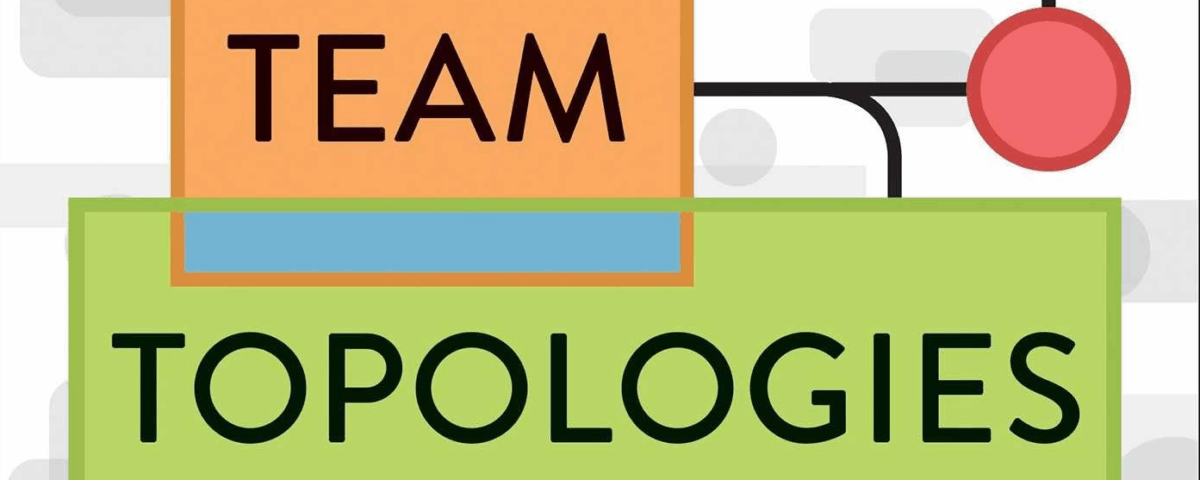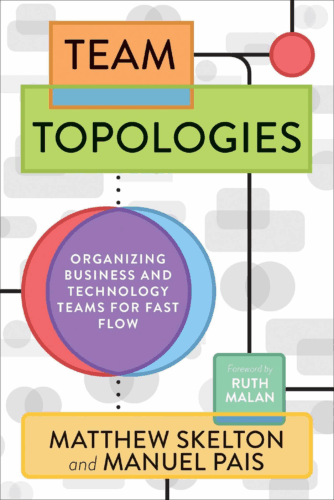
How I Got to a 55% Conversion Rate Without Doing Follow-ups
22 de April, 2025
Structural teams
6 de May, 2025In the world of digital product development, how we organize our teams directly impacts our ability to create value for customers and drive business results.
The book “Team Topologies” by Matthew Skelton and Manuel Pais makes valuable contributions to how we think about organizing technology teams.
In this article, I bring an expansion of the concepts introduced in Team Topologies, connecting them directly to product vision, customers, and desired outcomes, to structure teams that not only deliver quality software but also build successful products.
Product Development Team Topologies
Team Topologies is a fundamental reference for anyone thinking about how to organize technology teams. Among many relevant ideas, one of the best-known is the application of Reverse Conway’s Law: the proposal that if we want a particular system design, we should structure teams to favor it.
This perspective has led to significant gains in software engineering. However, like any approach, it reflects the background of its creators, who are predominantly technical. That’s precisely why I see an opportunity to expand the concept.
When we organize digital product development teams, our ultimate goal is not just to achieve a sound system architecture. Our goal is to build products that:
- Solve real customer problems;
- Generate sustainable business results;
- Consistently deliver value to both customers and the company.
Therefore, Conway’s Law and its reverse application should not be limited to system architecture alone. They should also extend to the product vision we aim to realize.
Looking through this broader lens leads us to the right questions:
- What product do we want to become in the future?
- Who are we building for?
- What results do we need to achieve for our company?
- How can the way we organize our teams help us realize this vision?
By designing team structures based on the product vision, we create organizations capable of aligning architecture, technology, and product around a shared goal.
This approach aligns with what I explore in the articles “Structuring effective product development teams” and “Product Management and Development Playbook“.
I have been guiding my clients to structure their teams not only to reflect system architecture but, most importantly, to realize the product vision and strategy they have defined.
Teams in Team Topologies and the Product Vision
In Team Topologies, Skelton and Pais propose four types of teams:
- Stream-aligned team: focused on a specific flow of value, such as a product or service.
- Complicated subsystem team: specializing in areas that require deep technical expertise.
- Enabling team: helping other teams overcome technical or process obstacles.
- Platform team: building internal platforms to accelerate the work of other teams.
Among these types, only the stream-aligned team comes close to a business connection, as it is linked to a flow of value.
However, even then, the concept of “stream” in the book is treated more as a technical and operational flow rather than an explicit representation of the customer, product vision, or business objectives.
In digital product development, this connection needs to be much stronger and clearer.
That’s why I have been guiding my clients to structure their teams not just around technical flows, but also deliberately around the product perspective.
This means structuring stream-aligned teams that, in product development, are usually customer-facing teams, as I explained in the articles “Structuring effective product development teams“.
These teams can be organized by:
- Product or feature;
- User type;
- User journey;
- Business objective.
It is common to combine more than one type of organization, forming what we call a hybrid structure.
For example, in a proptech company, we might have a team (or ‘tribe’) focused on the user who is buying a property. Within that team, one squad might focus on the objective of customer acquisition while another can focus on a specific journey, such as property search.
This type of organization increases the chances of product success by bringing the team closer to the customer and the market, turning team structure into an active and powerful tool to realize the product vision and achieve the desired outcomes.
Conclusion
Architecture matters. But in digital product development, the product vision, the customer, and the expected results must also be part of the equation to increase the chances of building a successful product.
Expanding the concept of Team Topologies to explicitly include the product vision is a natural step for anyone who wants to build not only well-architected systems but products that make a real difference for their customers and companies.
Workshops, coaching, and advisory services
I’ve been helping companies and their leaders (CPOs, heads of product, CTOs, CEOs, tech founders, and heads of digital transformation) bridge the gap between business and technology through workshops, coaching, and advisory services on product management and digital transformation.
Digital Product Management Books
Do you work with digital products? Do you want to know more about managing a digital product to increase its chances of success, solve its user’s problems, and achieve the company objectives? Check out my Digital Product Management books, where I share what I learned during my 30+ years of experience in creating and managing digital products:
- Digital transformation and product culture: How to put technology at the center of your company’s strategy
- Leading Product Development: The art and science of managing product teams
- Product Management: How to increase the chances of success of your digital product
- Startup Guide: How startups and established companies can create profitable digital products



